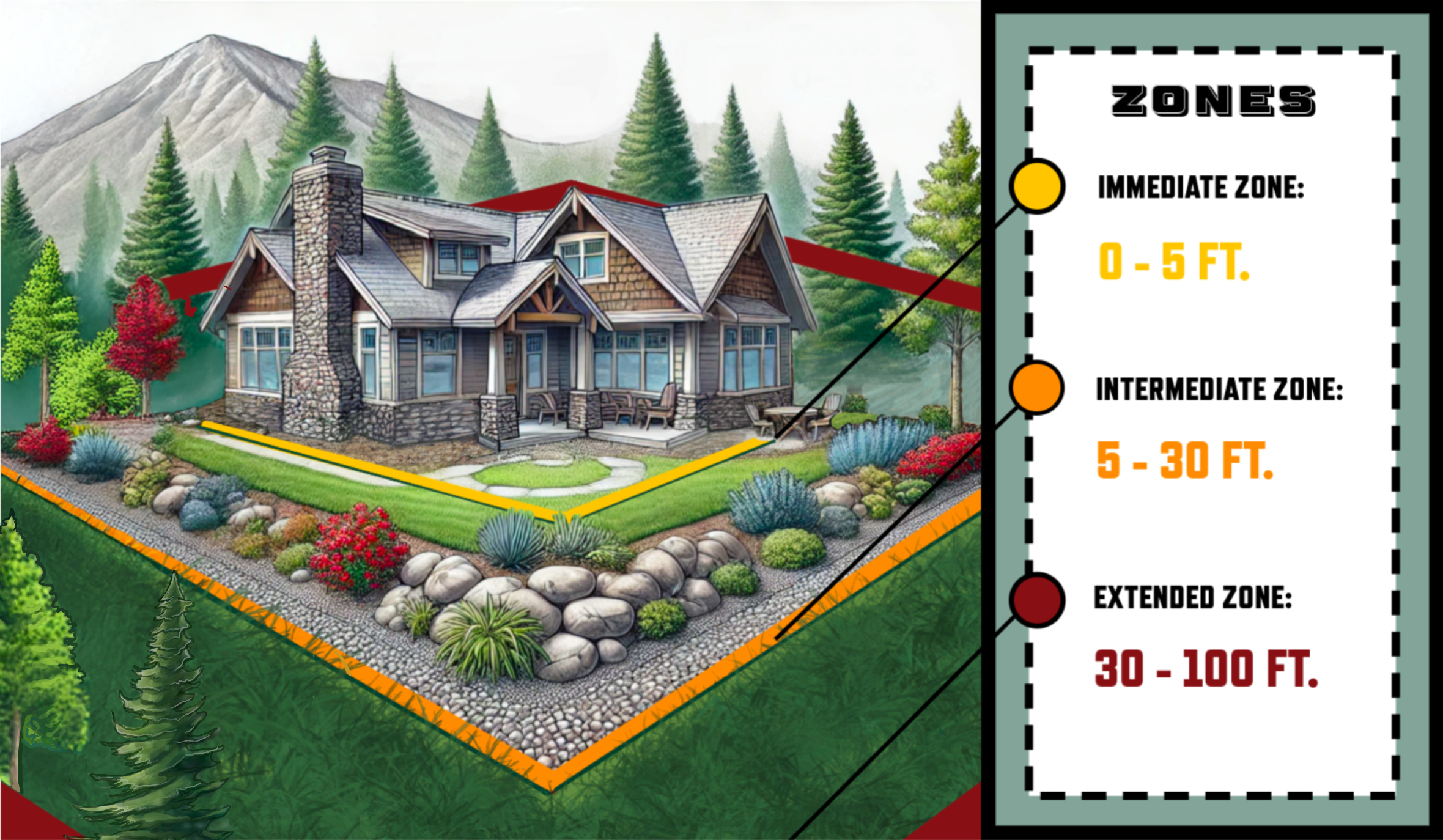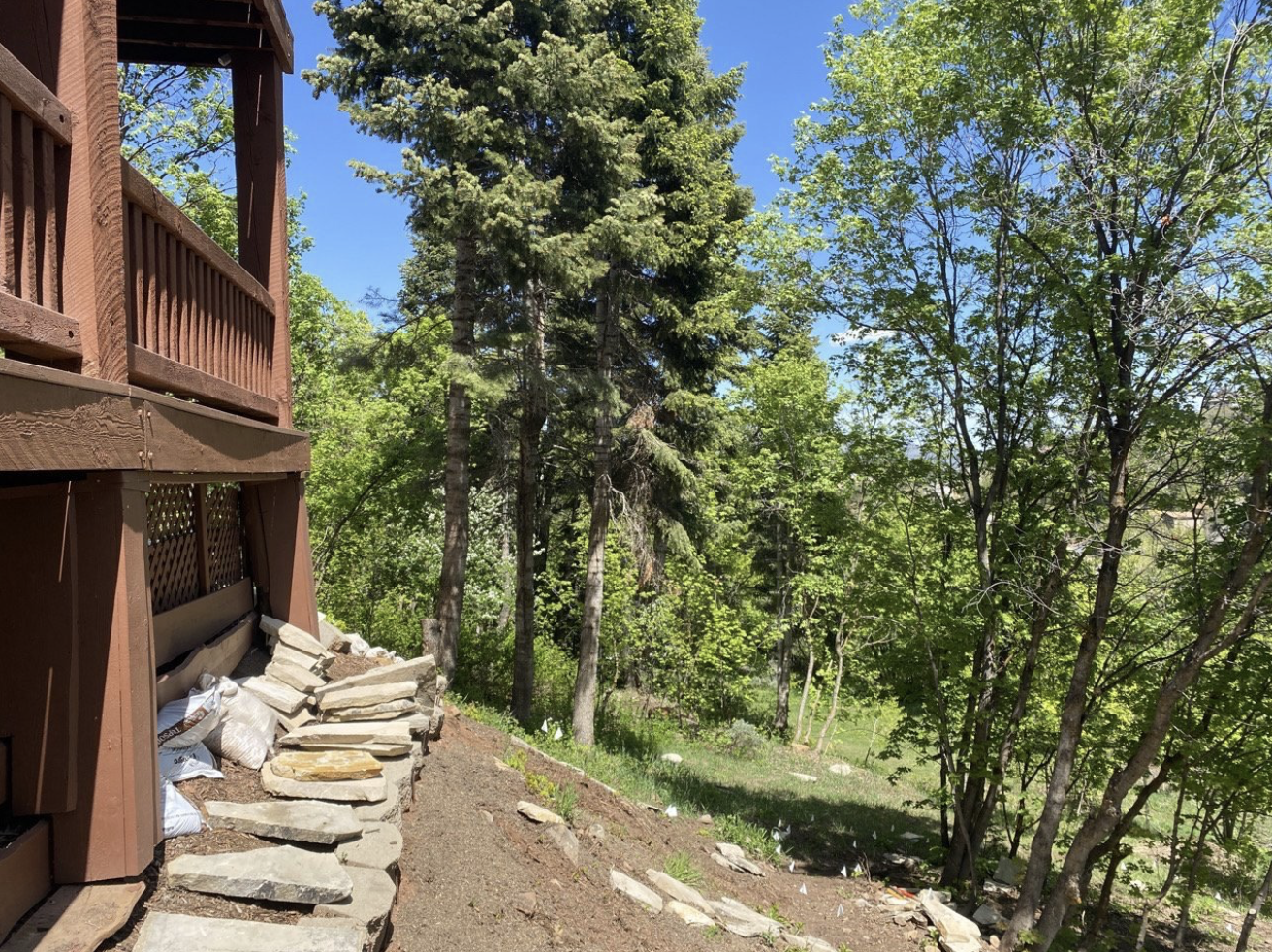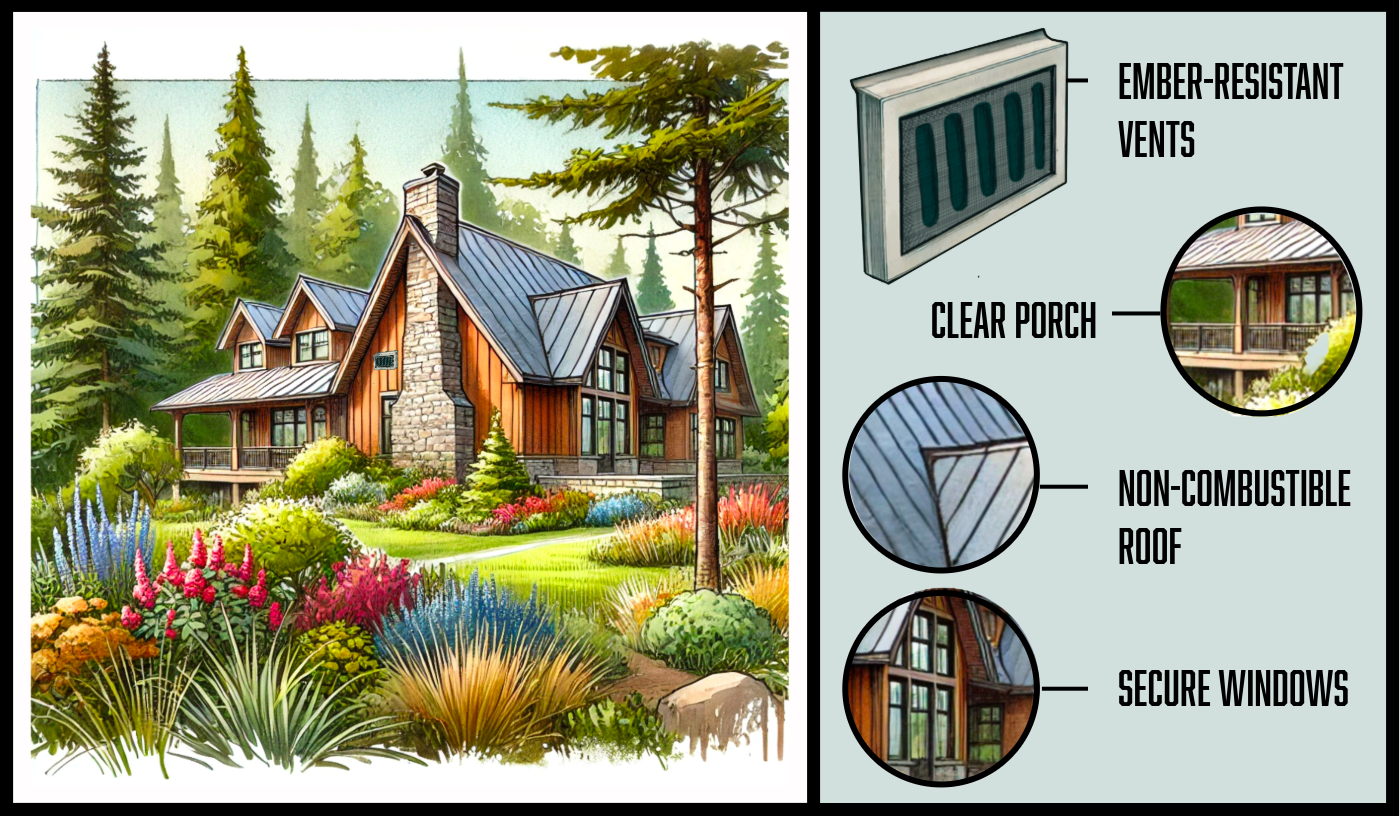5 Steps to Fireproof Your Property This Spring
As the risks of wildfire increase, with seasons now extending into traditionally safer times of the year due to drier winters and year-round fire activity, it’s more important than ever to take precautions early and stay proactive.
Growing insurance denials due to fire risk have also become a challenge for many homeowners. At Alpine Forestry, we can help navigate this by providing thorough work, detailed documentation, and even submitting the necessary information to your insurance company on your behalf.
By taking a proactive approach now, you can take critical steps to protect your home and land. Here are five expert-recommended steps to fireproof your property this spring:
1. Clear Defensible Space
Defensible space is the buffer you create between your home and the surrounding vegetation.
Remove dead leaves, pine needles, and other debris from your roof, gutters, and yard.
Trim trees and shrubs to ensure they are at least 10 feet away from your home and other structures.
Create a clearance of at least 30 feet around your home by removing flammable materials such as dead vegetation, woodpiles, and overgrown brush.
Tips:
For properties in high-risk areas, extend this clearance to 100 feet or more to account for steep slopes and wind patterns.
Additionally, replace flammable materials like wood chips or dry mulch near your home with non-flammable options such as gravel, crushed rock, or decorative stones. Many homeowners are unaware that wood chips can ignite and act as fuel, so swapping them out is a crucial step in reducing fire risk.
Alpine Forestry offers professional defensible space clearing and wildfire mitigation services. Let us handle the heavy lifting to ensure your property is safe and compliant with fire safety guidelines.
2. Maintain Your Landscaping
Your landscaping can either slow down or fuel a wildfire. Choose fire-resistant plants and maintain them properly.
Prune: Regularly trim trees and bushes to remove dead or overhanging branches.
Water: Keep your lawn and plants hydrated to reduce flammability.
Mulch Wisely: Use non-flammable materials like gravel or stone near structures instead of wood chips or dry bark.
Tips:
Replace flammable plants such as juniper or cedar with fire-resistant species that thrive in Utah (such as lilac, currant, snowberry, yarrow, blanket flower, or creeping phlox). These options not only reduce fire risk but also maintain the natural beauty of your property.
Keep gardens and flammable vegetation at least 5 feet away from your home’s foundation, and ensure any plants in this zone are regularly watered and well-maintained to prevent drying out. Within this immediate zone, prioritize non-flammable materials like gravel or stone. This buffer reduces the chance of embers igniting near your home while still allowing for beautiful and functional garden spaces further out.
3. Harden Your Home
With the right preparations, your home can become a strong defense against wildfires.
Install ember-resistant vents and cover openings with fine mesh screens to prevent embers from entering your home.
Replace flammable roofing materials with non-combustible options like metal, tile, or Class A shingles.
Seal gaps around windows, doors, and eaves to minimize ember intrusion.
Keep decks, patios, and porches clear of flammable items such as cushions and furniture.
Tip: Apply fire-resistant coatings to fences and siding for added protection.
4. Ensuring Emergency Vehicle Access
Make sure firefighters can easily access your property in the event of an emergency.
Keep driveways and access roads clear of obstructions like overgrown trees or parked vehicles.
Ensure your address is clearly visible from the road with reflective, non-flammable numbers.
If your property has gates, ensure they can be opened quickly and are wide enough for emergency vehicles.
Tip: Work with your local fire department to evaluate access and suggest improvements or ask our Certified Wildfire Mitigation Specialist for tips during your complimentary property assessment.
5. Create a Wildfire Action Plan
Preparation goes beyond your property—you need a plan for your family and belongings.
Develop an evacuation plan and practice it regularly with all household members, ensuring everyone knows multiple escape routes and communication plans.
Pack a "go bag" with essential items, including important documents, medications, N95 masks, fire maps, water, and clothing.
Stay informed about wildfire risks in your area by signing up for local alerts and warnings.
Our wildfire mitigation specialists can assess your property, provide tailored recommendations, and implement measures to protect your home and family.
Tip: Create a backup of important documents and photos in a secure, cloud-based location.
By following these steps, you can significantly reduce the risk of wildfire damage to your property and ensure your family’s safety. Fireproofing your property is an ongoing process. The efforts you make today will not only reduce risks but also provide long-term peace of mind through all wildfire seasons.
Need help preparing your property? Contact Alpine Forestry for expert wildfire mitigation services and personalized solutions to protect your home and land. Contact us today to schedule your free assessment!
Case Studies
Incorporating fire-resistant design and materials can significantly enhance a home's resilience against wildfires. A notable example is the residence at 271 Front Street in Lāhainā, Hawai’i (shown above), which survived the devastating 2023 wildfire that destroyed many neighboring structures. Key features contributing to this home's survival include:
Metal Roof: The homeowners installed a commercial-grade steel roof, which is non-combustible and less likely to ignite from airborne embers.
Non-Flammable Perimeter: They replaced the landscaping around the house with river stones, creating a non-flammable buffer zone that prevented the fire from reaching the structure.
Similarly, during the 2025 Palisades Fire in Los Angeles, certain homes remained unscathed due to strategic design and materials. For instance, a house in Pacific Palisades survived due to its non-flammable materials and strategic design elements, such as a concrete perimeter wall and a metal roof.
These cases underscore the importance of proactive planning and the integration of fire-resistant features in home construction and renovation. By adopting such measures, homeowners can significantly improve their property's chances of withstanding wildfires.







